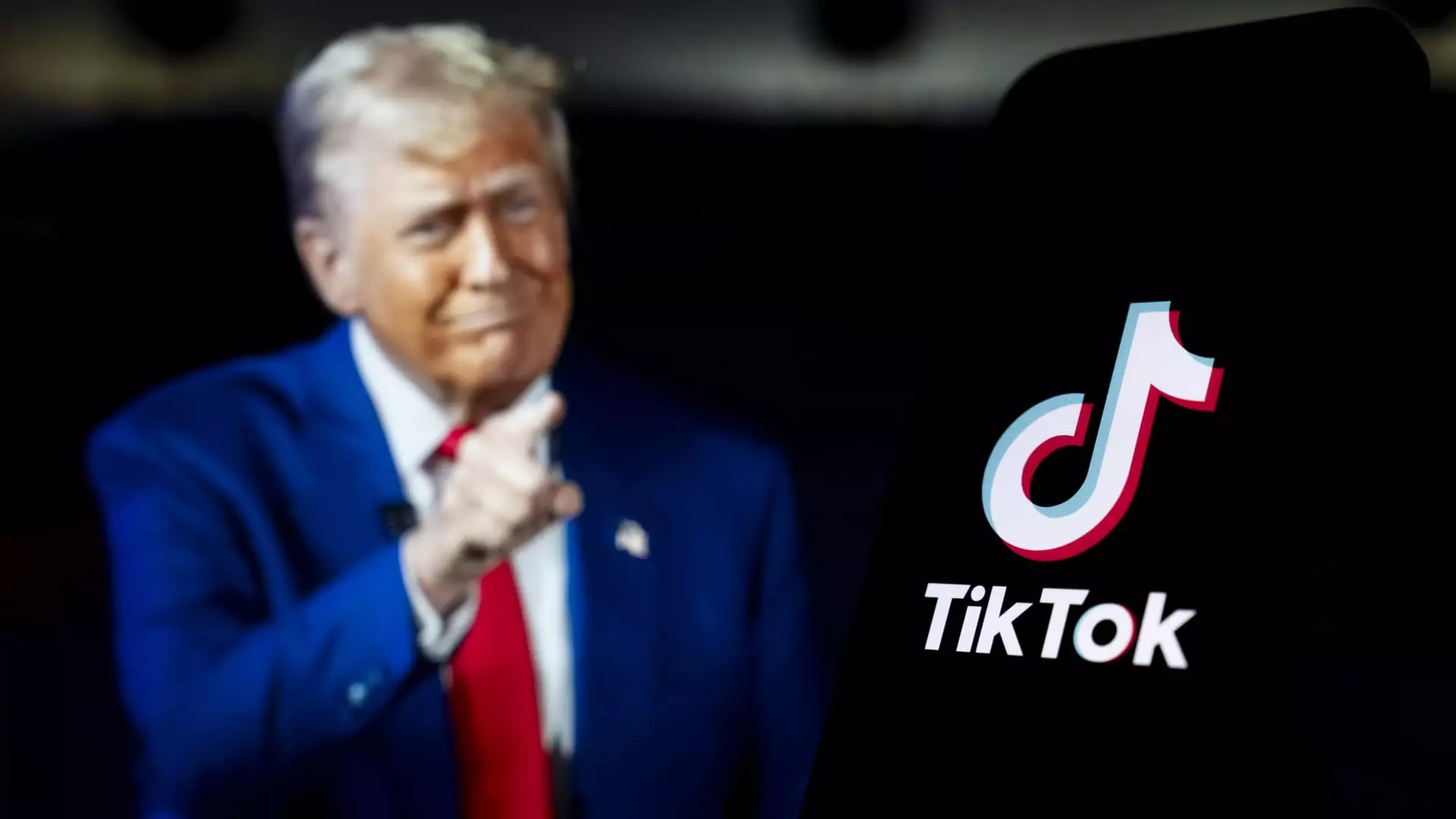TikTok has demonstrated a remarkable ability to recover from a significant drop in usage, regaining nearly all of its traffic levels after a brief yet impactful service shutdown. According to insights provided by Cloudflare Radar, the app, which had experienced an 85% decline in user traffic, is currently operating at about 10% less than normal following the restoration of its services. David Belson, the head of data insight at Cloudflare, emphasized that the Domain Name System (DNS)—a critical component for internet connectivity—has shown recovery trends indicative of TikTok’s resilience. This rebound raises intriguing questions about user loyalty, the app’s infrastructure, and broader implications for social media in a politically charged environment.
The temporary halt of TikTok services in the U.S. followed a ruling by the Supreme Court which upheld legislation aimed at compelling ByteDance, the app’s parent company, to divest itself of the platform or face a stringent ban. This political maneuver has turned TikTok into a focal point in the ongoing U.S.-China tensions, with the app’s fate hanging in the balance. Following the ruling, Apple and Google promptly removed TikTok from their app stores, which significantly impacted its accessibility. However, a change in administration brought a shift in strategy when former President Donald Trump announced a postponement of enforcement actions, granting the app another lifeline.
In the midst of these political machinations, a flurry of investment proposals has surfaced, suggesting that figures such as Elon Musk or Oracle’s Larry Ellison might take an interest in acquiring a stake in TikTok. Such developments reflect how high the stakes are for creators and investors, who are keenly aware of the app’s popularity and the substantial earnings potential tied to it.
The temporary shutdown has not only highlighted TikTok’s consumer steadfastness but has also stimulated user interest in alternative platforms. Cloudflare noticed a marked spike in traffic to various TikTok alternatives coinciding with the shutdown, indicating that consumers are willing to explore other avenues when preferred services become unavailable. RedNote, particularly popular in China and known locally as Xiaohongshu, saw a notable uptick, illustrating how competitive dynamics within the short-form video market can shift rapidly.
Nevertheless, as TikTok resumed operations, traffic to these alternative platforms receded, suggesting that user loyalty is deeply entrenched. While a segment of creators is experimenting with other platforms like YouTube and Instagram, many of them are encountering challenges in replicating their TikTok success. For some prominent creators, the transition to other social media formats—such as YouTube Shorts or Instagram Reels—has not delivered the same level of engagement or financial reward, underscoring the unique appeal of TikTok’s design and community.
With the potential for future disruptions looming over TikTok, creators have been quick to adapt. For instance, Dylan Lemay, a creator with a substantial TikTok following, has proactively built his presence on alternative platforms. He has articulated a forward-thinking approach, acknowledging that he needs to prepare for an uncertain landscape where TikTok could potentially vanish. Notably, Lemay’s success on platforms like YouTube, where he has amassed millions of subscribers, illustrates a growing trend among creators to diversify their online portfolios to hedge against the uncertainties surrounding TikTok.
Yet, this strategy is not equally effective for everyone. Creators like Noah Glenn Carter, despite having a massive TikTok following, report struggling to garner similar traction on platforms such as Instagram and YouTube. This speaks to the inherent challenges of translating content across different mediums and highlights the distinction of TikTok as a unique social ecosystem that fosters a different kind of community engagement.
As TikTok’s fate hangs precariously in the balance, its long-term viability in the U.S. remains contentious. Creators who have invested significant time and resources into building their audiences on the platform are feeling the pinch of uncertainty. The situation poses critical questions about the adaptability of digital content creators in the face of rapidly evolving market conditions and regulations.
While some creators express skepticism about the likelihood of TikTok being permanently banned, citing the platform’s unique attributes that foster community engagement, others are making their diversifications a priority. In a landscape characterized by rapid shifts, adapting to these changes will be vital for ensuring sustained success in the complex world of online content creation. As users continue to navigate an increasingly dynamic digital environment, the balance between risk and opportunity remains delicately poised around the future of platforms like TikTok.


Leave a Reply